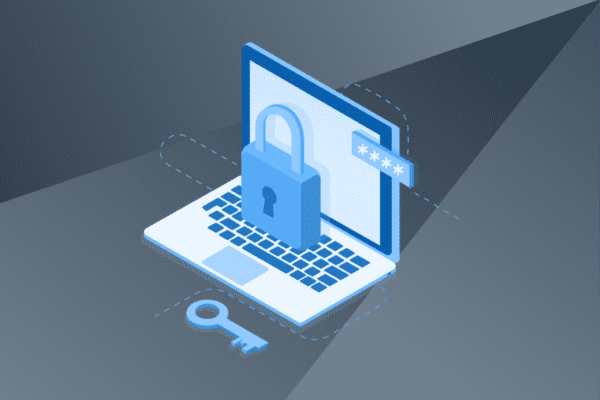Timely deployment of patches is critical for maintaining the security of your IT systems. Through efficient patch management, you can regularly deploy software patches and keep your IT infrastructure up to date. While most remote monitoring and management (RMM)/ endpoint management solutions feature patch management functionality, third-party patching is a key component that shouldn’t be overlooked.
What is third-party patching and why is it important? Keep reading to find out!
What are Third-Party Applications?
A third-party application is software created by a company other than the original manufacturer of the device on which the application running or the operating system (OS) that supports it.
For example, Adobe Acrobat Reader is a third-party app that is available for both Microsoft Windows and macOS.
Commonly Used Third-Party Applications
Some of the most commonly used third-party applications include Adobe Acrobat Reader DC, Adobe Photoshop, Google Chrome, Google Drive, WinZip, TeamViewer, Evernote, LibreOffice, and Cisco Systems Webex Productivity Tools. Each of these third-party apps are used every day by businesses for their day-to-day operations.
For example, WinZip is a popular third-party app used for compression, sharing, encryption and backing up files. Adobe Acrobat Reader DC is used to view, open, print, sign, search, annotate and share PDF files. Businesses also frequently make use of the file storage and synchronization service offered by Google Drive.
What is Third-Party Patching?
Third-party patching or third-party patch management, is essentially the process of deploying patch updates to third-party applications that have been installed on one or more of your endpoints (e.g., servers, desktops, or laptops). Third-party patching addresses bugs or vulnerabilities in the software that either affect its function or security. Patching software vulnerabilities is a critical part of your overall IT security process that helps prevent exploitation by hackers.
Endpoint management tools also perform patch management for operating systems including Windows, Windows Server and macOS to keep them up to date and protected against cyberattacks.
What is an Application Patch?
An application patch is a version of the software that has been designed to fix a vulnerability or bug in the application. As noted above, patches may address functional bugs or security vulnerabilities.
What is the Difference Between a Patch and an Update?
It is not uncommon for people to confuse patches with updates, although they differ from each other, with each serving a unique purpose. Updates are designed for software enhancement and are focused on adding new or upgraded features and functionalities to an existing program.
On the other hand, patches are specifically designed to fix security vulnerabilities or bugs in the software to improve its usability/performance, minimize the attack surface (by remediating software vulnerabilities) and protect the system against potential cyberattacks.
Why is Third-Party Patching Important?
Cyberattacks are a major threat to the productivity and sustainability of any organization. While many organizations maintain proactive efforts at patching their OS software, they often fail to follow the same discipline in keeping their third-party software patched and up to date.
From small businesses to large enterprises, all companies leverage a variety of third-party software in their daily operations. In recent years, third-party applications have become the primary attack vector for a variety of cyberattacks, such as malware. In the 2020 Verizon Data Breach Investigations Report, about 6 percent of security breaches (not attacks, actual breaches) involved exploits of software vulnerabilities. As such, it is imperative for businesses to proactively embrace third-party patching to minimize the attack surface for cybercriminals.
Dangers of Neglecting Third-Party Application Patches
The consequences of delaying or ignoring third-party patching can be disastrous for any organization. There were more than 18,000 publicly disclosed software vulnerabilities 2020 and more than 4,300 of them were rated critical. Unpatched critical vulnerabilities in third-party applications are a gateway for cybercriminals to enter the corporate network and wreak havoc on the business.
Every time you don’t deploy the patches released by vendors to fix application security bugs, you are exposing your systems to potential cyberattacks. The infamous ransomware attack Bad Rabbit, which first appeared in 2017, was disguised as an Adobe Flash installer (a third-party app) and spread via drive-by downloads on compromised websites.
Third-party applications, such as Mozilla Firefox and Adobe Reader, have recently emerged as being responsible for a steady upward trend in the number of vulnerabilities that continue to affect users around the world.
Automating the patch management process enables you to avoid the disastrous impacts of serious yet preventable cyberattacks.
How Often Should You Perform Third-Party Patch Management?
Unlike Microsoft, which sticks to a regular patch release schedule, most third-party vendors do not follow a specific frequency for releasing patches. Third-party vendors usually roll out security patches as and when a bug or vulnerability is detected and they need to fix it.
The sheer volume of third-party apps organizations use on an everyday basis makes it next to impossible to manually keep track of all of the relevant patches.
Given that third-party patching (like OS patching) is critical for keeping your organization secure, it only makes sense to automate it. Automating third-party patching ensures that patches for third-party software are automatically deployed within a short time of their release. Generally, you should try to apply patches within 15 to 30 days of availability. For critical vulnerabilities, the sooner the better, of course.
Automated Third-Party Patching
Automating the process of third-party patching ensures that all patches are deployed on time and according to your company’s security policies. Needless to say, automated third-party patching not only helps keep your IT infrastructure secure and up to date but also saves you the headache of performing manual patching.
There are patch management tools for third-party patching that regularly scan third-party software for patch updates and deploy them as soon as they are released by the vendor. Once the patches are installed, the third-party patch management solution documents the process in the form of reports and logs for future reference.
Benefits of Automated Third-Party Patching
Automating third-party patching helps you stay on top of your software patch updates and frees up time for your technicians to focus on more strategic and revenue-generating projects.
Some of the other important benefits of automated third-party patching are:
- Automated Gathering & Deployment: One of the most attractive benefits is that it saves your technicians the cumbersome task of manually searching for and deploying patches for numerous third-party applications that you use every day.
- Consolidated Management & Reporting: Deploying an automated third-party patch management solution enables you to view all the installed patches on a single dashboard and document reports on what patches have been deployed and what issues have been addressed.
- Maintain Security & Compliance: Automating third-party patching ensures timely and consistent installation of patches that not only helps reinforce your cybersecurity posture but also keeps your business compliant with industry regulations.
Automated Third-Party Patching with Kaseya VSA
Kaseya VSA is known across the industry for its powerful OS and third-party patch management capabilities. All you need is Kaseya VSA’s built-in Software Management module and the optional third-party patching license that brings powerful software deployment and patching capabilities to your IT operations. Keep your endpoints secure against ever-evolving cyberthreats with Kaseya VSA.
Learn more about Kaseya VSA’s patch management capabilities.


